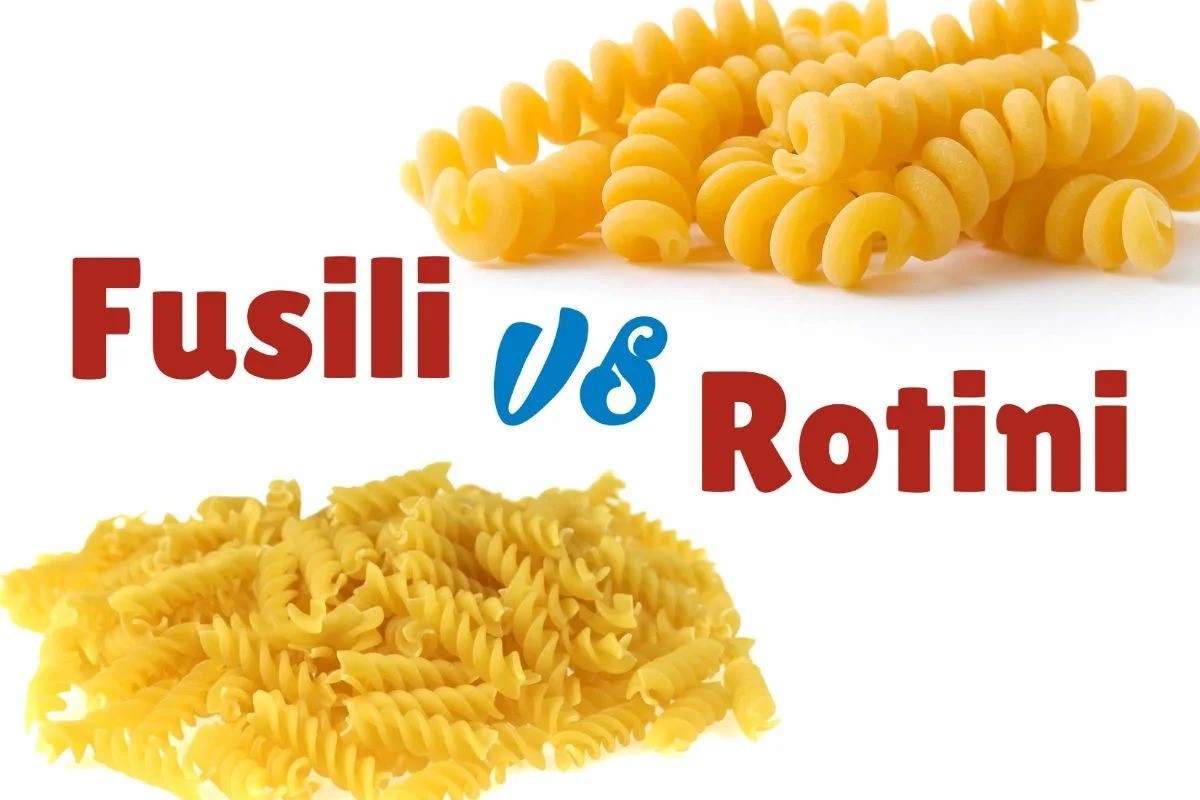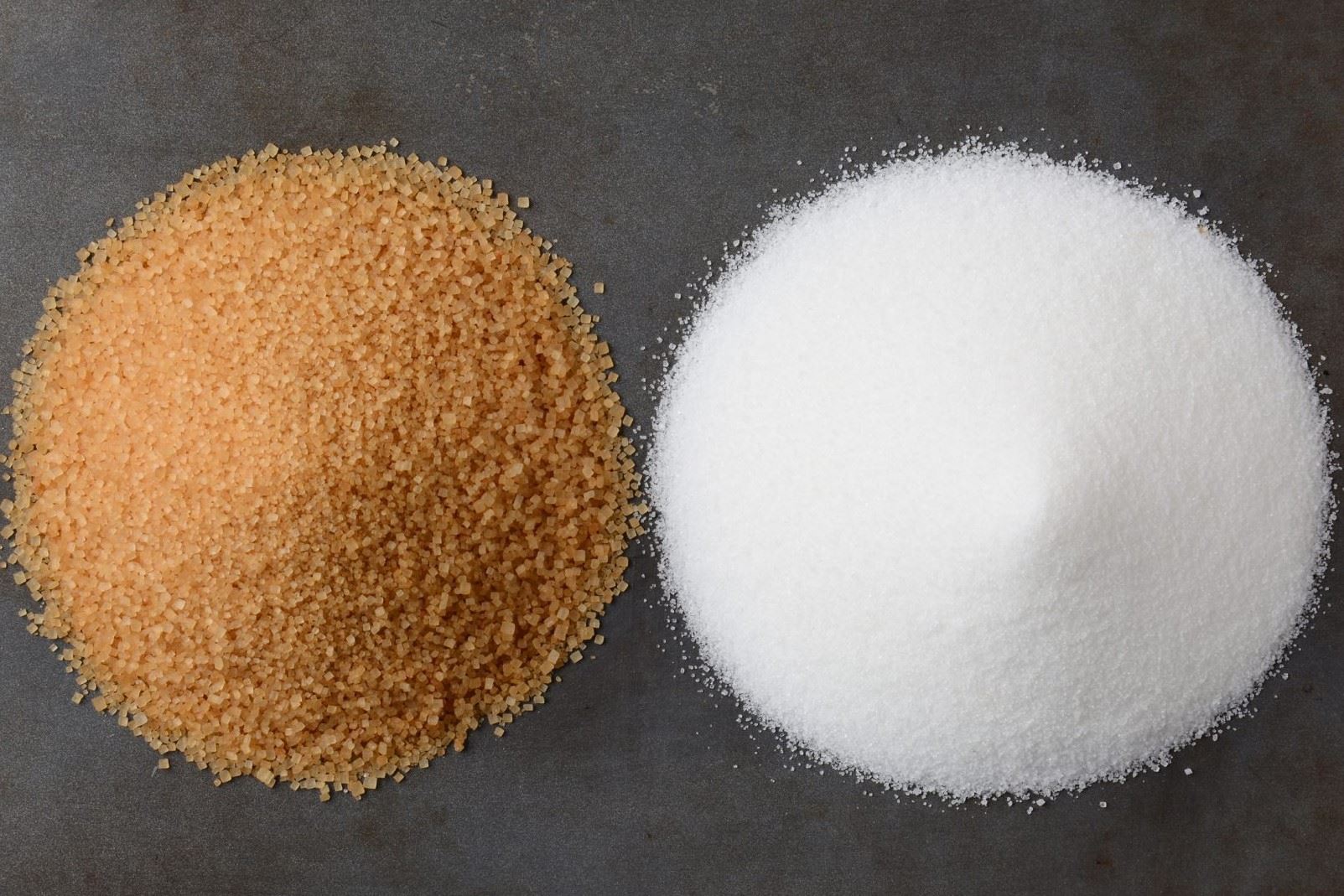Home>Food and Cooking>Unveiling The Surprising Distinctions Between Fusilli And Rotini Pasta


Food and Cooking
Unveiling The Surprising Distinctions Between Fusilli And Rotini Pasta
Published: February 12, 2024
Discover the key differences between fusilli and rotini pasta in this comprehensive guide. Explore the world of food and cooking with our expert insights.
(Many of the links in this article redirect to a specific reviewed product. Your purchase of these products through affiliate links helps to generate commission for Noodls.com, at no extra cost. Learn more)
Table of Contents
Introduction
Pasta, a beloved staple in countless cuisines, comes in a myriad of shapes and sizes, each with its own unique characteristics. Among the vast array of pasta varieties, fusilli and rotini stand out for their distinctive shapes and textures, making them popular choices for a wide range of culinary creations. While these two pasta types may appear similar at first glance, a closer examination reveals intriguing differences that greatly influence their culinary applications.
In this article, we will delve into the fascinating world of fusilli and rotini, unraveling their origins, exploring the nuances of their shapes and textures, and uncovering the diverse ways in which they are used in cooking. By the end of this exploration, you will gain a deeper appreciation for these two pasta varieties and be inspired to incorporate them into your culinary endeavors. So, let's embark on this delectable journey to discover the surprising distinctions between fusilli and rotini pasta.
The Origins of Fusilli and Rotini
Fusilli and rotini, two beloved pasta shapes, have rich and distinct origins that contribute to their unique culinary significance.
Fusilli, originating from Southern Italy, particularly the regions of Campania and Basilicata, has a history deeply rooted in Italian tradition. The name "fusilli" is derived from the Italian word "fuso," meaning spindle, which aptly describes the pasta's corkscrew shape. This classic pasta variety has been cherished for generations, with its origins dating back to the 16th century. The traditional method of crafting fusilli involves rolling and shaping thin ribbons of pasta around a rod or spindle, resulting in its signature spiral form. This meticulous process reflects the artisanal craftsmanship that has been preserved through the ages, contributing to the enduring appeal of fusilli in Italian cuisine.
On the other hand, rotini, hailing from Northern Italy, particularly the regions of Lombardy and Trentino-Alto Adige, boasts a distinct heritage that sets it apart. The name "rotini" is derived from the Italian word "rota," meaning wheel, which perfectly encapsulates the pasta's spiral, helical shape. With its origins dating back to the late 20th century, rotini represents a relatively modern addition to the diverse landscape of pasta shapes. Its unique form is achieved through a meticulous process of extrusion, where the pasta dough is forced through a die to create its distinctive corkscrew-like structure. This innovative method of production has contributed to the widespread popularity of rotini, making it a versatile choice for various culinary applications.
The rich historical and geographical backgrounds of fusilli and rotini underscore the cultural significance and culinary versatility of these pasta varieties. As we continue our exploration, we will delve deeper into the distinct shape and texture differences between fusilli and rotini, shedding light on their culinary implications and inspiring a newfound appreciation for these beloved pasta shapes.
The Shape and Texture Differences
The shape and texture of pasta play a pivotal role in determining its culinary applications and overall dining experience. When comparing fusilli and rotini, it becomes evident that their distinct shapes and textures contribute to their individual characteristics and versatility in cooking.
Fusilli: Spiraled Elegance
Fusilli, with its intricate corkscrew shape, exudes a sense of elegance and artistry. The tightly coiled spirals of fusilli not only create a visually captivating appearance but also serve a functional purpose in capturing and holding onto sauces and ingredients. This unique shape allows fusilli to embrace the flavors of accompanying sauces, ensuring that each bite is infused with a harmonious blend of textures and tastes. Additionally, the ridges along the surface of fusilli provide an ideal canvas for clinging onto creamy sauces, making it a popular choice for dishes such as creamy pesto pasta or indulgent carbonara.
In terms of texture, fusilli boasts a firm and resilient consistency, allowing it to maintain its shape and integrity during cooking. This characteristic makes fusilli well-suited for a variety of cooking methods, including boiling, baking, and stir-frying. Whether incorporated into hearty casseroles or served as the star of a vibrant pasta salad, fusilli's robust texture ensures that it can withstand diverse culinary techniques while retaining its delightful al dente bite.
Rotini: Versatile Spirals
Rotini, characterized by its tightly wound helical shape, embodies a sense of versatility and adaptability in the culinary realm. The compact spirals of rotini are adept at capturing and holding onto a wide array of sauces and ingredients, making it a favored choice for dishes that demand a harmonious mingling of flavors. The unique structure of rotini allows it to cradle chunky vegetables, savory meats, and creamy sauces, creating a delightful medley of textures and tastes in every forkful.
In terms of texture, rotini possesses a slightly denser and more substantial feel compared to fusilli. This attribute lends itself well to heartier dishes, where the pasta's robust texture can stand up to robust sauces and ingredients. Whether simmered in a rich Bolognese sauce or tossed with vibrant seasonal vegetables, rotini's resilient texture ensures that it can hold its own amidst an array of bold flavors and hearty components.
In essence, the shape and texture differences between fusilli and rotini offer a captivating glimpse into the diverse culinary possibilities that each pasta variety presents. As we transition to exploring the cooking and pairing variations of these beloved pasta shapes, we will uncover the nuanced ways in which fusilli and rotini can be utilized to elevate a wide range of culinary creations.
Cooking and Pairing Variations
When it comes to cooking and pairing variations, both fusilli and rotini offer a wealth of possibilities to tantalize the taste buds and elevate culinary creations. The unique shapes and textures of these pasta varieties make them well-suited for a diverse range of cooking methods and flavor pairings.
Fusilli: A Canvas for Culinary Creativity
Fusilli's elegant spirals and resilient texture make it a versatile choice for an array of cooking techniques. Boasting a robust structure, fusilli excels in absorbing and complementing a wide spectrum of sauces, from rich and creamy to light and zesty. Its corkscrew shape allows it to effortlessly capture and hold onto the essence of accompanying ingredients, ensuring that each bite is a harmonious blend of flavors and textures.
In the realm of cooking, fusilli shines in both hot and cold preparations. When boiled to al dente perfection, it serves as an ideal foundation for classic pasta dishes such as Fusilli alla Norma, where it harmonizes with the robust flavors of eggplant, tomatoes, and aged ricotta. Additionally, its resilient texture makes it a standout contender for baked pasta dishes, as it retains its shape and integrity even when layered with indulgent cheeses and savory sauces.
Pairing-wise, fusilli's adaptable nature allows it to complement an extensive range of ingredients. It pairs exquisitely with creamy sauces, such as Alfredo or carbonara, where its ridged surface captures the velvety richness of the sauce. Furthermore, its ability to intermingle with vibrant vegetables and succulent proteins makes it a delightful addition to pasta salads and hearty casseroles, offering a delightful medley of flavors and textures in every forkful.
Rotini: Embracing Bold Flavors
Rotini's tightly wound spirals and substantial texture make it a formidable contender for hearty and robust culinary creations. Its dense structure enables it to stand up to bold and flavorful sauces, making it an excellent choice for dishes that demand a hearty and satisfying dining experience.
In the realm of cooking, rotini excels in dishes that feature substantial sauces and ingredients. Whether simmered in a rich and savory ragu or tossed with a medley of roasted vegetables, its resilient texture ensures that it can hold its own amidst an array of bold flavors. Additionally, its compact spirals make it an ideal companion for chunky sauces and ingredients, as it adeptly cradles and intertwines with the diverse components, creating a symphony of flavors and textures in every bite.
Pairing-wise, rotini's robust nature allows it to harmonize with an assortment of bold and savory flavors. It pairs exquisitely with hearty meat-based sauces, such as a slow-simmered Bolognese, where its dense texture complements the richness of the sauce. Furthermore, its ability to intermingle with substantial vegetables and cheeses makes it a standout choice for baked pasta dishes, where it can hold its own amidst layers of savory fillings and indulgent toppings.
In essence, the cooking and pairing variations of fusilli and rotini showcase the remarkable adaptability and culinary prowess of these beloved pasta shapes. Whether incorporated into classic Italian recipes or innovative fusion creations, fusilli and rotini stand as versatile canvases for culinary creativity, inviting chefs and home cooks alike to explore the endless possibilities they offer in the realm of gastronomy.
Culinary Uses and Recipes
Fusilli and rotini, with their distinctive shapes and textures, lend themselves to a myriad of culinary uses and recipes, offering endless opportunities to create delectable dishes that delight the senses. From classic Italian preparations to innovative fusion creations, these beloved pasta shapes have secured their place as versatile staples in the culinary world.
Fusilli: A Versatile Canvas for Culinary Creativity
Fusilli's elegant spirals and resilient texture make it a versatile choice for a wide array of culinary creations. Its corkscrew shape allows it to capture and hold onto a diverse range of sauces and ingredients, making it an ideal canvas for culinary creativity. Whether used in hot or cold dishes, fusilli's adaptability shines through in a multitude of recipes.
One classic culinary use of fusilli is in the beloved dish Fusilli alla Norma, a Sicilian pasta preparation featuring tender eggplant, rich tomato sauce, and aged ricotta. The spiraled elegance of fusilli intertwines with the savory components, creating a harmonious medley of flavors and textures in every bite. Additionally, fusilli excels in pasta salads, where its resilient texture ensures that it maintains its delightful al dente bite even when combined with an assortment of vibrant vegetables and savory dressings.
For those seeking a comforting and indulgent meal, fusilli proves to be an excellent choice for baked pasta dishes. Whether layered with creamy sauces, cheeses, and savory fillings or incorporated into hearty casseroles, its robust texture ensures that it holds its shape and integrity, resulting in a satisfying dining experience.
Rotini: Embracing Bold Flavors and Hearty Creations
Rotini's tightly wound spirals and substantial texture make it a formidable contender for dishes that feature bold and hearty flavors. Its dense structure allows it to stand up to robust sauces and ingredients, making it an excellent choice for creating substantial and satisfying culinary creations.
One popular culinary use of rotini is in hearty meat-based sauces, such as the classic Bolognese. The compact spirals of rotini adeptly cradle the rich and savory sauce, ensuring that each bite is a delightful amalgamation of flavors and textures. Additionally, rotini excels in baked pasta dishes, where its resilient texture allows it to hold its own amidst layers of indulgent fillings and toppings, creating a comforting and flavorful dining experience.
In essence, fusilli and rotini offer a wealth of culinary uses and recipes, inviting chefs and home cooks to explore their versatility and adaptability in the realm of gastronomy. Whether incorporated into time-honored Italian dishes or innovative fusion creations, these beloved pasta shapes continue to inspire culinary creativity and delight discerning palates with their delightful textures and harmonious flavor pairings.
Conclusion
In conclusion, the exploration of fusilli and rotini has unveiled a captivating tapestry of culinary diversity, showcasing the remarkable distinctions between these beloved pasta shapes. From their rich historical origins to their unique shapes and textures, fusilli and rotini have carved out distinctive niches in the realm of gastronomy, offering endless opportunities for culinary creativity and flavor exploration.
The origins of fusilli and rotini, deeply rooted in Italian tradition, reflect the cultural significance and artisanal craftsmanship that have been preserved through the ages. Fusilli, with its elegant corkscrew shape and resilient texture, exudes a sense of timeless artistry, while rotini, with its tightly wound spirals and substantial texture, embodies a modern versatility that has captured the hearts of culinary enthusiasts worldwide.
The shape and texture differences between fusilli and rotini have illuminated their individual characteristics and culinary implications. Fusilli's spiraled elegance and adaptable nature make it a versatile canvas for culinary creativity, excelling in both hot and cold dishes and harmonizing with a diverse range of sauces and ingredients. On the other hand, rotini's robust structure and ability to embrace bold flavors position it as a formidable contender for hearty and substantial culinary creations, showcasing its prowess in dishes featuring rich and savory components.
Furthermore, the cooking and pairing variations of fusilli and rotini have underscored their adaptability and culinary prowess, inviting chefs and home cooks to explore the endless possibilities they offer in the realm of gastronomy. Whether incorporated into classic Italian recipes or innovative fusion creations, fusilli and rotini stand as versatile canvases for culinary creativity, inspiring a myriad of delectable dishes that delight the senses and elevate the dining experience.
In the realm of culinary uses and recipes, fusilli and rotini have proven to be indispensable staples, offering endless opportunities to create comforting classics and innovative culinary creations. Whether featured in beloved Italian preparations or reimagined in contemporary fusion dishes, these beloved pasta shapes continue to captivate discerning palates with their delightful textures and harmonious flavor pairings.
In essence, the surprising distinctions between fusilli and rotini have illuminated the multifaceted nature of pasta, showcasing the enduring allure and culinary versatility of these beloved pasta shapes. As we conclude this delectable journey, may the exploration of fusilli and rotini inspire culinary enthusiasts to embrace their unique characteristics and embark on flavorful adventures that celebrate the artistry and diversity of pasta in all its splendid forms.













